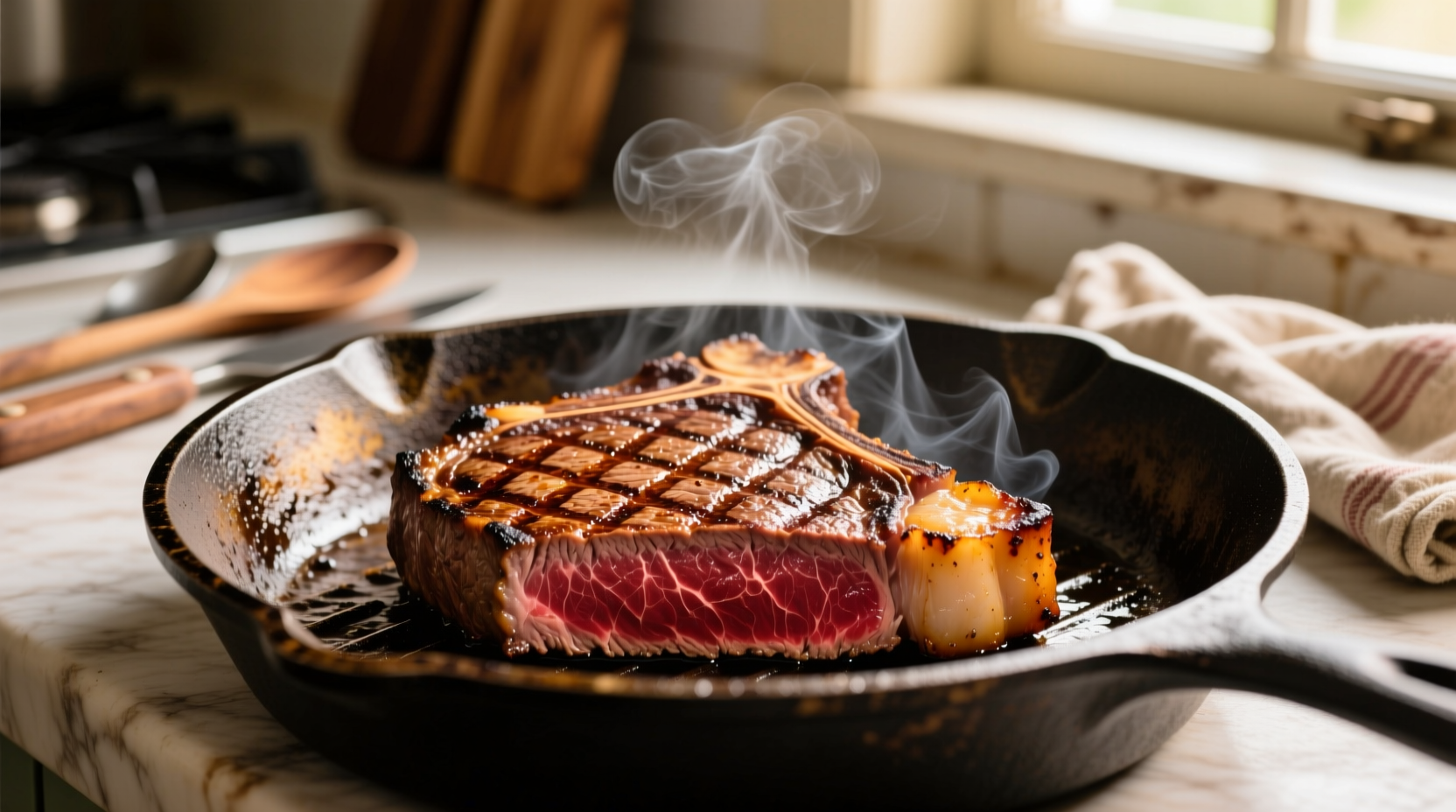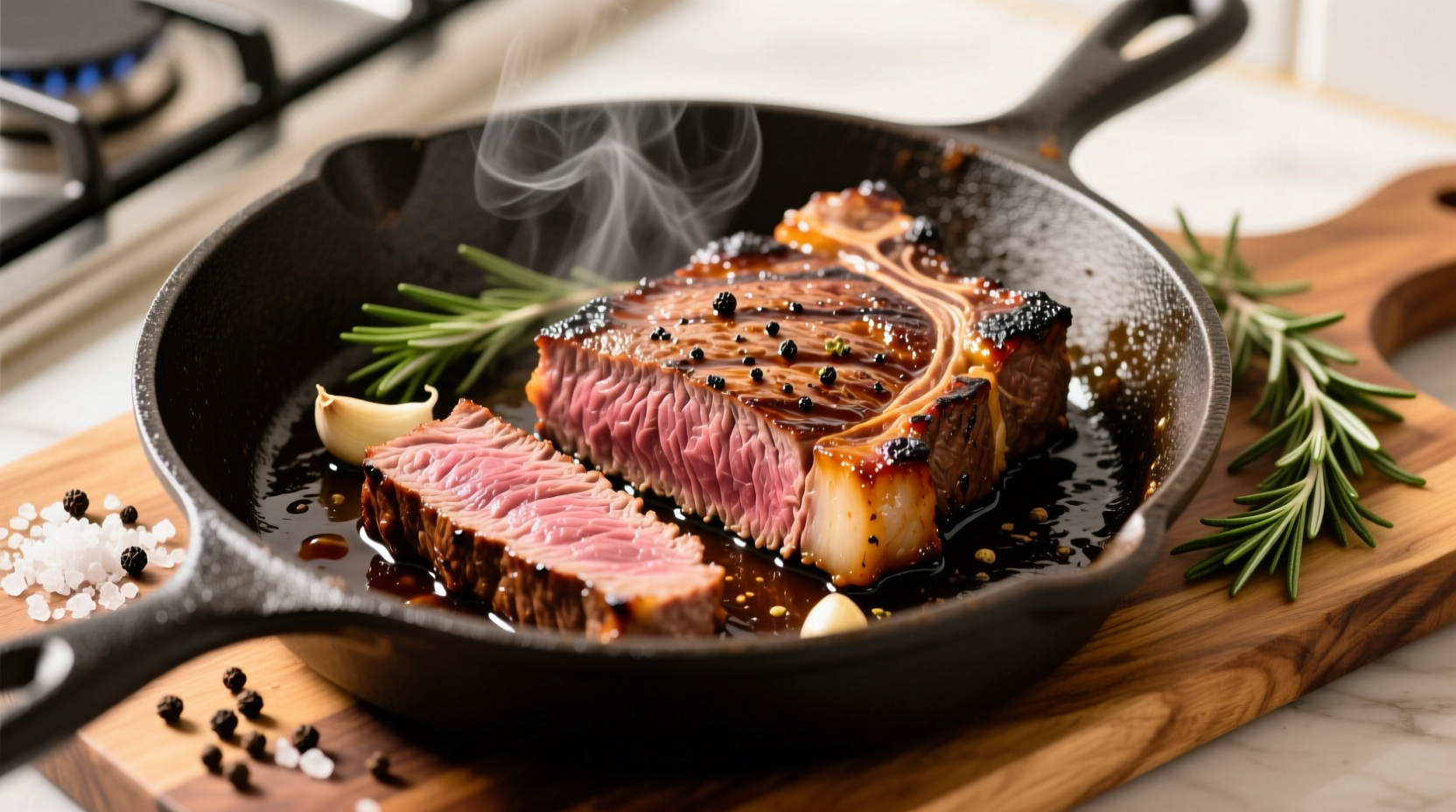Why Stove-Top Flank Steak Works Best
Flank steak's lean composition and distinctive grain respond exceptionally well to high-heat stove-top cooking. Unlike thicker cuts, this thin cut (typically 1-1.5 inches thick) achieves perfect sear without overcooking the interior. The American Meat Science Association confirms that direct dry-heat methods like stovetop searing maximize Maillard reaction development while preserving moisture in lean cuts like flank steak.

Pre-Cooking Preparation: The Foundation for Success
Proper preparation separates good results from exceptional ones. Follow these critical steps before heating your pan:
- Dry thoroughly: Pat steak completely dry with paper towels - moisture is the enemy of proper searing
- Season strategically: Apply 1 teaspoon kosher salt per pound 45 minutes before cooking for optimal penetration
- Temperature equilibrium: Remove from refrigerator 30 minutes before cooking to eliminate thermal shock
- Marinade option: For deeper flavor, use acid-based marinade (like lime juice) for 2-4 hours maximum to avoid texture damage
| Flank Steak Thickness | Recommended Cooking Time | Target Internal Temp |
|---|---|---|
| 1 inch | 3-4 minutes per side | 130-135°F (medium-rare) |
| 1.25 inches | 4-5 minutes per side | 130-135°F (medium-rare) |
| 1.5 inches | 5-6 minutes per side | 130-135°F (medium-rare) |
The Critical Cooking Process: Step-by-Step
Equipment Setup
Use a heavy-bottomed cast iron or carbon steel skillet - these materials provide superior heat retention crucial for proper searing. Preheat on medium-high for 5 minutes until a drop of water sizzles violently and evaporates within 1-2 seconds. This temperature verification method comes from the Culinary Institute of America's professional cooking standards.
Searing Technique
- Add high-smoke point oil (avocado or grapeseed) to create thin film across surface
- Place steak in pan away from you to prevent oil splatter injury
- Do not move steak for first 2 minutes to allow proper crust formation
- After 2 minutes, check for golden-brown crust before flipping
- Cook second side 1-2 minutes less than first side (due to residual heat)
- For thicker cuts, sear edges by holding steak vertically with tongs
Temperature Monitoring
Insert instant-read thermometer horizontally into thickest part. The USDA Food Safety and Inspection Service recommends removing steak from heat at 120-125°F for medium-rare to account for 5-10°F temperature rise during resting. Never pierce steak with fork during cooking - use tongs to prevent juice loss.
Resting and Slicing: The Non-Negotiable Final Steps
Resting allows juices to redistribute throughout the meat. Place steak on cutting board, tent loosely with foil, and wait:
- 1-1.25 inch steak: 8 minutes minimum
- 1.5 inch steak: 10 minutes minimum
Slicing technique makes or breaks your results. Cut perpendicular to the grain (90-degree angle to muscle fibers) in 1/4-inch slices. This shortens tough muscle fibers, transforming potentially chewy steak into tender bites. The National Cattlemen's Beef Association confirms this slicing method improves perceived tenderness by up to 40%.
Troubleshooting Common Problems
Problem: Steak sticks to pan
Solution: Insufficient pan preheating or moving steak too soon. Wait until crust forms naturally (about 2 minutes) before attempting to flip.
Problem: Uneven cooking
Solution: Inconsistent steak thickness. Use gentle pressure with tongs during first minute of cooking on thicker sections only.
Problem: Burnt exterior, raw interior
Solution: Pan too hot. Reduce heat slightly after initial sear, or finish in 400°F oven for thicker cuts.
Proven Flavor Enhancements
While salt and pepper create perfect foundation, these evidence-based additions elevate results:
- Garlic butter finish: During last 2 minutes, add 2 tbsp butter, 2 garlic cloves, and rosemary sprig to pan, basting steak continuously
- Post-cooking acid: A squeeze of fresh lime juice just before serving brightens rich flavors
- Smoked paprika rub: Adds depth without overwhelming the meat's natural flavor profile
Serving Suggestions That Complement Flank Steak
Pair your perfectly cooked steak with these complementary elements:
- Side dishes: Chimichurri sauce, grilled vegetables, or cilantro-lime rice
- Cutting board presentation: Arrange slices slightly overlapping for visual appeal
- Leftover utilization: Chill completely before slicing for fajitas - cold meat slices cleaner











 浙公网安备
33010002000092号
浙公网安备
33010002000092号 浙B2-20120091-4
浙B2-20120091-4